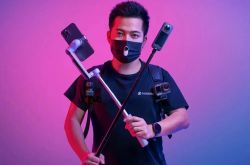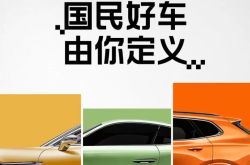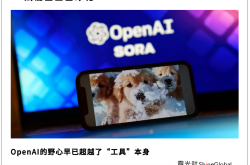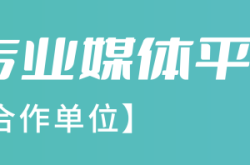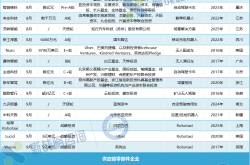Past and Present | The Decade-Long Journey of China's New Energy Vehicle Pioneers: From Cross-Industry Ventures to Global Competition
![]() 10/17 2025
10/17 2025
![]() 555
555




Source: Zhiche Technology
The development history of China's new energy vehicle pioneers is a tale of transformation and cross-industry collaboration. From contract manufacturing to independent operations, and from being capital darlings to surviving industry winters, these brands have achieved in just a few years what traditional automakers took decades to accomplish.
In 2024, China's annual NEV production and sales surpassed 10 million units, reaching 12.888 million and 12.866 million vehicles respectively, maintaining global leadership for 10 consecutive years. Over the past decade, production and sales have soared from tens of thousands to millions, with exports reaching over 70 countries and regions, becoming a "shining business card (bright card)" for Chinese manufacturing.
Rewinding to 2014, when Tesla disrupted the Chinese market as a "catfish," a wave of automotive ventures began. Over the past decade, first-generation players like NIO, XPeng, and Li Auto, along with newcomers like Leapmotor and Xiaomi, have not only reshaped China's automotive landscape but also transitioned from followers to leaders. Their rise was no accident; their "past" DNA foretold today's trajectory.

Past: Born via Contract Manufacturing—The Early Mass Production Journey of Emerging Players
2014 marked the "first year" of China's NEV pioneers. Subsidies expanded nationwide, policy barriers lowered, and Tesla's open patent technologies catalyzed a surge of entrepreneurs from diverse industries.
In China's early NEV industry, production qualifications were the first major hurdle for emerging players.
For internet entrepreneurs without automotive backgrounds, acquiring entry through contract manufacturing or acquisitions became the fastest route.
1. Internet Elites' "Automotive Experiments"
Pioneers like NIO, XPeng, and Li Auto were defined by their founders' internet backgrounds.
NIO's inception stemmed from Li Bin's industry experience. In 2014, the entrepreneur who led Bitauto to become China's first overseas-listed automotive internet firm co-founded NIO with Liu Qiangdong and Li Xiang. Lacking manufacturing infrastructure, NIO partnered with JAC Motors for contract production, focusing resources on user experience and battery swap technology—a classic "asset-light startup + ecological layout" model applying internet thinking to automotive.

In April 2016, NIO and JAC signed a strategic cooperation agreement for JAC to manufacture NIO models, a partnership lasting until December 2023. NIO invested RMB 3.158 billion to acquire JAC's factory assets, ending contract manufacturing. During its 2019 funding crisis, Hefei's RMB 7 billion investment not only relocated NIO's headquarters but also spurred self-built production upgrades.
XPeng's DNA was rooted in He Xiaopeng's internet entrepreneurship. In 2014, after selling UC Browser to Alibaba for USD 4.3 billion, He ventured into automotive. Early XPeng lacked production qualifications, partnering with Haima Motors to contract-manufacture its first model, the G3, in Zhengzhou. This "R&D + contract production" model allowed resource concentration on intelligent driving technology. By 2024, XPeng's advancements in highway/urban assisted driving and end-to-end driving remained industry benchmarks. After terminating its Haima partnership in 2021, XPeng built factories in Zhaoqing and Guangzhou, transitioning from "internet automotive" to "smart manufacturing."

Li Auto's foundation was tied to Li Xiang's deep user insights. The serial entrepreneur behind PCpop and Autohome pivoted to automotive in 2015, targeting family users' pain points. To quickly secure production qualifications, Li Auto acquired Lifan Motors' assets in 2018, building a factory in Changzhou to launch the Li ONE. This "precision positioning + qualification acquisition" strategy bypassed early approval hurdles, entering the extended-range SUV market and laying groundwork for profitability.

2. Manufacturing Veterans' "Transformation Breakthroughs"
Leapmotor and Seres (formerly AITO) exemplify traditional manufacturers' NEV transitions.
Leapmotor founder Zhu Jiangming blended computer science and manufacturing expertise. A former Motorola executive and Dahuatech co-founder, Zhu established Leapmotor in 2015 with a "full-domain self-research" strategy. Lacking qualifications, Leapmotor initially contracted Changjiang Passenger Vehicles, launching its first model, the S01, at Changjiang's Hangzhou plant in January 2019. After two years, Leapmotor acquired Fujian New Fuda Auto for qualifications, ending its Changjiang partnership. On September 25, 2025, Leapmotor announced its 1 millionth vehicle rollout, becoming China's second NEV pioneer to join the "million club."

The birth of AITO stemmed from Seres' deep collaboration with Huawei. Seres' history traces back to 1986 when Zhang Xinghai founded the "Chongqing Baxian Phoenix Electrical Appliance Spring Factory," dominating 90% of China's washing machine spring market. Transitioning to automotive shock absorbers in 1996, it became a Chang'an Auto supplier; in 2003, it co-founded Dongfeng Xiaokang with Dongfeng Group, entering the mini-van market. In 2016, Seres pivoted fully to NEVs, partnering with Huawei in 2020 under the "Intelligent Selection" model to launch AITO models, achieving three leaps from "Spring King" to "Smart Automaker."

3. Traditional Automakers' "Premium Incubation"
Facing pressure from emerging players, traditional automakers responded by incubating new brands.
Zeekr and Neta represent two incubation paths.
Zeekr, launched by Geely Group in April 2021, leveraged Geely's manufacturing systems and SEA pure electric architecture, inheriting mature supply chains and production capabilities. Its debut model, the Zeekr 001, became a hit with over 200,000 deliveries, dominating the RMB 250,000 pure electric segment and showcasing traditional automakers' incubation strengths.
Neta's predecessor, Hozon New Energy, was founded in 2014 by Fang Yunzhou, a veteran in new energy. Its early team blended traditional automotive and tech talent. Launching in 2018, Neta utilized Zhejiang Taizhou's manufacturing base and Hozon's qualifications, targeting mid-to-high-end needs in second- and third-tier markets to gain footing.
BAIC Group launched its premium NEV brand ARCFOX (Extreme Fox) in 2016, targeting high-end smart electric vehicles. In 2018, BAIC and Magna co-established the BAIC Blue Valley Magna Smart Manufacturing Base to support ARCFOX production.
Dongfeng Motor Group formed a high-end NEV project team (codename "H Division") in 2018, officially launching the VOYAH brand in July 2020 as a premium smart electric vehicle subsidiary with full Dongfeng support in R&D, manufacturing, and funding.
Great Wall Motor's NEV journey began earlier. In 2009, it established the "ORA New Energy Technology Department" for R&D. After nearly a decade, Great Wall officially launched the ORA brand in August 2018, focusing on pure electric models and later women's markets with hits like the ORA Good Cat.
Changan Auto unveiled its digital pure electric brand "Deepal" in April 2022, built on the Changan EPA1 pure electric platform and adopting market-driven operations.
4. Cross-Industry Collaboration: Exploring New Models
Cross-industry partnerships became another distinctive path in China's NEV development.
Xiaokang Stock (later Seres) partnered with Huawei in April 2021, launching the premium NEV brand AITO in December. The first model, the AITO M5, debuted in March 2022, produced at Seres' Liangjiang Smart Factory with Huawei's DriveONE electric drive system and HarmonyOS cockpit. Their collaboration deepened in August 2023, forming the "AITO Joint Sales and Service Team" with Huawei handling R&D, sales, and service, while Seres focused on manufacturing—a "Huawei-empowered + Seres-manufactured" model.
State-owned enterprises and internet giants also formed NEV alliances. IM Motors, founded in 2020, was initially jointly held by SAIC Motor, Zhangjiang Hi-Tech, and Alibaba. In June 2024, IM Motors underwent industrial and commercial changes, adding new shareholders like Bank of China's Zhongyin Financial Assets, CATL's Wending Investment, China Pacific Insurance, and Qingtao Energy, with registered capital increasing from RMB 10.85 billion to RMB 13.77 billion.
Xiaomi's entry provided a "full-ecosystem empowerment" paradigm. In March 2024, the Xiaomi SU7, positioned as a "C-class high-performance ecological tech sedan," launched, drawing market attention with founder Lei Jun's internet background and Xiaomi's ecosystem. Unlike other emerging players' early contract manufacturing, Xiaomi secured independent production qualifications in July 2024 and achieved its 100,000th vehicle rollout in November, setting a 230-day record for the fastest 100,000-unit milestone among new automakers and showcasing strong resource integration and execution.

Present: Differentiation, Shakeout, and Consolidation
If the first five years were a "wild growth" phase for emerging players, the next five years (post-2020) became an era of "survival of the fittest." Subsidy reductions, intensifying competition, and rapid technological iteration shifted the industry from "quantity" to "quality" competition. Leading brands formed stable hierarchies through differentiation, while once-prominent names like WM Motor and Aiways exited.
1. Differentiated Breakthroughs Among Leading Players
By 2025, "NIO, XPeng, Li Auto, Leapmotor" formed the first tier, each leveraging initial DNA for unique competitiveness:
Li Auto emerged as the industry's "profitability benchmark." Precisely targeting family users with products featuring "refrigerators, TVs, and sofas" and extended-range technology, it became the first to turn profitable in 2023, delivering 500,500 vehicles in 2024. By 2025, its 1 millionth vehicle rollout took just 58 months, a record. Despite challenges in intelligent driving layout and delayed pure electric transitions, strong cost control and user loyalty kept it atop sales charts.
Leapmotor rose as a "cost-performance dark horse." Leveraging full-domain self-research and cost control, it became China's second NEV pioneer to achieve positive net profit in 2024. On September 25, 2025, its 1 millionth vehicle rollout marked the fastest growth in the sector, with 343 days needed to go from 500,000 to 1 million units. Its overseas performance was equally strong, with over 30,000 deliveries across 30 countries and regions from January to August 2025. This advantage tied closely to founder Zhu Jiangming's technical background and early qualification control.
NIO adheres to its "premium service barrier". Despite not yet achieving stable profitability, its energy services centered around the battery swap system and user operation model have cultivated a large and loyal user base. By 2024, NIO had delivered a cumulative total of 221,970 new vehicles, securing its foothold in the premium market. Its deep integration with the Hefei government has further provided it with sustained resources for development, forming a unique model of "manufacturing + services + ecosystem.".
XPENG Motors emphasizes its "intelligent driving label." After the unsuccessful launch of the G9 model in 2022, founder He Xiaopeng drove organizational reforms by bringing in automotive industry veteran Wang Fengying to optimize the sales system. The G6 model introduced in 2023 became a "lifesaver," driving deliveries back up to 190,100 units in 2024, a year-on-year increase of 34.2%. Its technical collaboration with Volkswagen Group marks a significant shift for China's new forces from "technology import" to "technology export.".
Xiaomi Auto: The "Game-Changer" of Ecosystem and Efficiency. As the latest entrant among major players, Xiaomi leveraged its strong brand influence, ecosystem synergy, and remarkable execution efficiency to achieve the fastest production ramp-up from "0 to 100,000 units" in 2024. Its "Human-Vehicle-Home Ecosystem" strategy and the market enthusiasm for its first model, the SU7, suggest it will become an unignorable variable in the future market landscape.
2. Warnings from the Eliminated Players
The new energy vehicle (NEV) industry has experienced rapid growth driven by capital, but it has also undergone a process of winnowing out the weak.
In October 2023, Stellantis, the world's fourth-largest automotive group, announced an investment of approximately €1.5 billion to acquire about a 20% stake in Leapmotor. Simultaneously, the two sides established the "Leapmotor International" joint venture, which holds exclusive rights to conduct export and sales operations in all global markets outside Greater China.
In stark contrast to Leapmotor, some new-force brands have found themselves in dire straits amid fierce competition.
The downfall of WM Motor is emblematic of the industry shakeout. Founder Shen Hui had accumulated experience across the entire value chain, including energy, components, and vehicle manufacturing. In 2019, its sales volume briefly rivaled those of NIO, XPENG, and Li Auto. However, frequent product quality issues and the failure to deliver on intelligent features ultimately led to its bankruptcy and restructuring in 2023. Its failure underscores a core principle in the automotive industry: regardless of initial background, product strength, technological iteration capability, and operational efficiency ultimately determine success or failure.
Neta Auto has seen declining sales since 2023, with volumes halving to 64,500 units in 2024 and plummeting by 97.76% in January 2025 to just 110 units. Neta's valuation has collapsed from 42.3 billion yuan in 2023 to 6 billion yuan, with state-owned shareholders and old investors losing trust in the founding team and suppliers facing mounting unpaid debts. In May 2025, rumors surfaced about a "Toyota acquisition of Neta Auto," though neither side has officially confirmed it.
The fate of HiPhi Motors has been even more convoluted. In May 2025, Jiangsu HiPhi Automotive Co., Ltd. was established, with Gihad Mohammed serving as its legal representative and chairman, and a registered capital of approximately $143 million. The new company is jointly held by EV Electra and Human Horizons (Jiangsu) Technology Co., Ltd. (the original parent company of HiPhi Motors), with ownership stakes of 69.8% and 30.2%, respectively. However, EV Electra, the acquirer of HiPhi, is a Lebanese electric vehicle enterprise founded in 2017 that has yet to officially sell a single vehicle.

Transformation: From Local Breakthrough to Global Competition
Over the past decade, new forces have not only reshaped China's automotive market but also propelled the Chinese auto industry to achieve a "leapfrog development." Data shows that China now accounts for over 70% of the global new energy vehicle market, with new forces serving as the core driving force for "Made in China, Powered by Intelligence" to go global.
Behind this transformation lies the new forces' reconstruction of the industry ecosystem. At the technological level, XPENG's intelligent driving, NIO's battery swap technology, and Leapmotor's full-domain self-research have propelled China's new energy vehicles to evolve deeply from "electrification" to "intellectualization." At the industrial level, new forces have driven the market share of domestic brands to climb to 60%, reversing the positions of joint ventures and domestic brands. Globally, cases such as the joint venture between Leapmotor and Stellantis Group and Volkswagen's stake in XPENG have ushered in a new era of "reverse joint ventures" in China's auto industry.
However, challenges remain: apart from Li Auto, leading brands like NIO and XPENG have yet to achieve stable profitability; ethical risks and data security issues surrounding intelligent driving technologies are becoming increasingly prominent; and overseas markets pose dual challenges of trade barriers and insufficient brand recognition.
The entry of new players like Xiaomi Auto and the expansion of Huawei's HarmonyOS Intelligent Mobility ecosystem will further intensify competition.

Insights: Genetic Code and Industry Fundamentals
Looking back at the decade-long rise and fall of new forces, each brand's development trajectory is closely tied to its "genetic heritage": the internet gene has endowed NIO, XPENG, and Li Auto with a keen grasp of user needs and an ecosystem-oriented mindset; the manufacturing background has equipped Leapmotor and Seres with cost control and production implementation capabilities; and incubation by traditional automakers has provided Zeekr with mature supply chain support.
However, regardless of initial genetics, surviving brands all adhere to common industry fundamentals—continuous technological investment, precise market positioning, and efficient operational capabilities.
From a spring factory to a smart vehicle manufacturer, from internet entrepreneurs to automotive industry leaders, the decade-long development of new forces represents not only a microcosm of China's auto industry transformation and upgrading but also a vivid practice of China's manufacturing industry moving toward high-end, intelligent, and green development.
As technology continues to iterate and market competition deepens, the industry may witness another round of shakeouts. However, one thing is certain: these brands that have emerged from the cross-border wave have laid a solid foundation for China's auto industry to compete globally.
As an industry insider put it, "We missed the first 100 years of the automotive industry but fortunately caught the decade of smart vehicles." And this decade is writing a brand-new chapter in China's auto industry history.
This grand industrial transformation has only just begun.
- End -
Disclaimer: Works marked "Source: XXX (non-Zhiche Tech)" in this official account are all reprinted from other media. The purpose of reprinting is to transmit and share more information and does not represent this platform's endorsement of its views or responsibility for its authenticity. Copyright belongs to the original author. If there is any infringement, please contact us for deletion.

